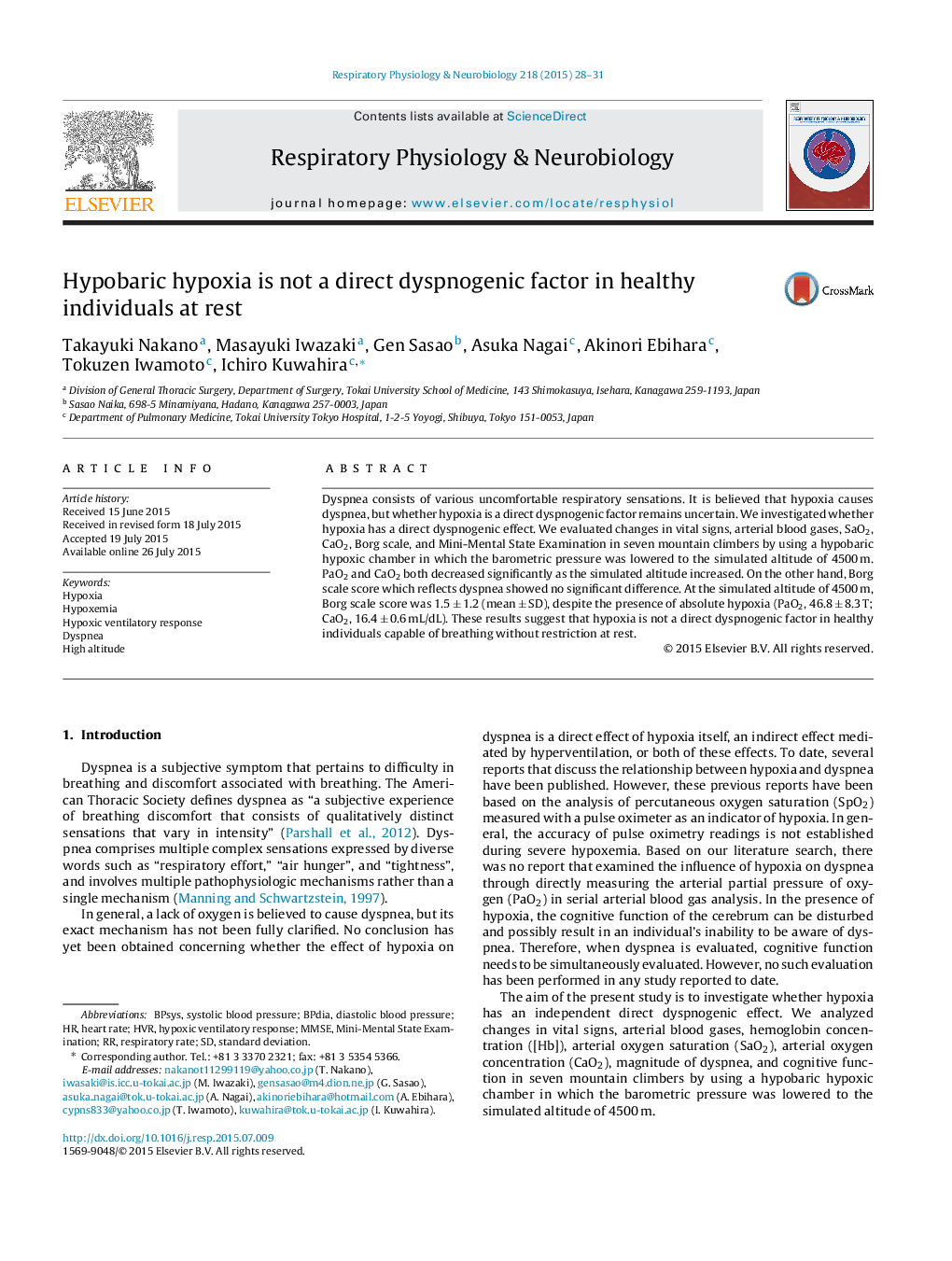| Article ID | Journal | Published Year | Pages | File Type |
|---|---|---|---|---|
| 2846822 | Respiratory Physiology & Neurobiology | 2015 | 4 Pages |
•Relationship between hypoxia and dyspnea was evaluated by using a hypobaric chamber.•Participants had no dyspnea despite the presence of hypoxia (Pao2 46.8 ± 8.3 T).•Hypoxia is not a direct dyspnogenic factor in healthy individuals at rest.
Dyspnea consists of various uncomfortable respiratory sensations. It is believed that hypoxia causes dyspnea, but whether hypoxia is a direct dyspnogenic factor remains uncertain. We investigated whether hypoxia has a direct dyspnogenic effect. We evaluated changes in vital signs, arterial blood gases, SaO2, CaO2, Borg scale, and Mini-Mental State Examination in seven mountain climbers by using a hypobaric hypoxic chamber in which the barometric pressure was lowered to the simulated altitude of 4500 m. PaO2 and CaO2 both decreased significantly as the simulated altitude increased. On the other hand, Borg scale score which reflects dyspnea showed no significant difference. At the simulated altitude of 4500 m, Borg scale score was 1.5 ± 1.2 (mean ± SD), despite the presence of absolute hypoxia (PaO2, 46.8 ± 8.3 T; CaO2, 16.4 ± 0.6 mL/dL). These results suggest that hypoxia is not a direct dyspnogenic factor in healthy individuals capable of breathing without restriction at rest.
